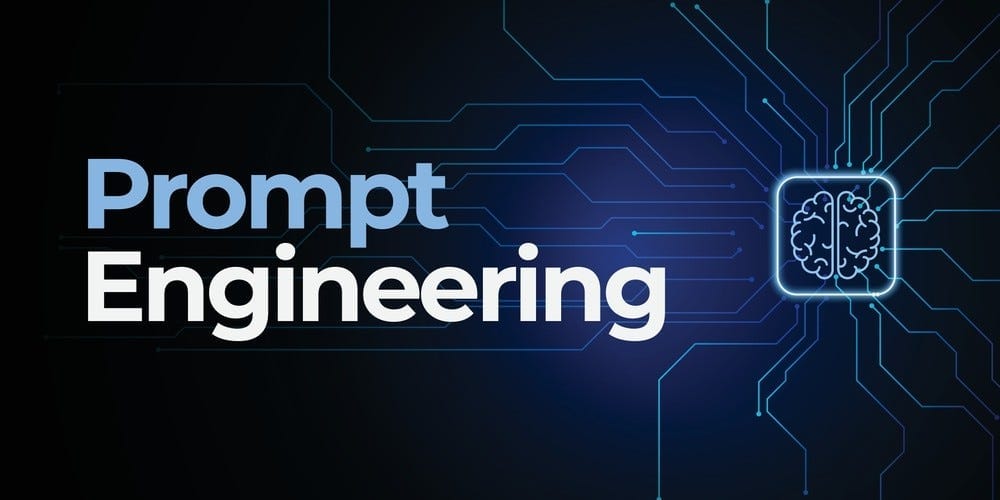Have you ever wondered how to get the best results when talking to AI? That’s where prompt engineering comes in. It’s like learning to ask the right questions to get helpful answers. In this post, we’ll explore the best way to think about prompt engineering.
Whether you’re new to AI or just curious, we’ll break it down in simple terms. By the end, you’ll have a better idea of how to craft prompts that work well. So, let’s dive in and discover what is the best way to think of prompt engineering!
Table of Contents
- Understanding Prompt Engineering
- The Best Way to Think of Prompt Engineering
- Key Elements of Effective Prompts
- Common Mistakes to Avoid
- How To Improve Your Prompt Engineering Skills
- Conclusion
Understanding Prompt Engineering

Prompt engineering is like learning to talk to AI in a way it understands best. Imagine you’re trying to get information from a smart friend who speaks a different language. You need to figure out how to ask questions in a way they’ll get. That’s what prompt engineering is all about.
Here’s why it matters:
- Better results: When you ask the right way, you get better answers.
- Save time: Good prompts mean fewer back-and-forths with AI.
- More control: You can guide the AI to give you what you really want.
Think of it as a skill that helps you and AI work together better. As AI becomes a bigger part of our lives, knowing how to “speak AI” through good prompts will be super helpful.
The Best Way to Think of Prompt Engineering
So, what is the best way to think of prompt engineering? Here are some ideas to help you wrap your head around it:
1. Be a teacher
- Imagine you’re explaining something to a smart student.
- Break down your ideas into clear, simple steps.
- Use examples to make things clearer.
2. Be a detective
- Ask yourself: What exactly do I want to know?
- Think about what details the AI might need to help you.
- Look for clues in the AI’s responses to improve your next prompt.
3. Be a chef
- Start with a basic recipe (prompt) and tweak it.
- Add a pinch of detail here, and a dash of context there.
- Taste test (check the results) and adjust as needed.
4. Be a tour guide
- Lead the AI through your thought process.
- Point out the important landmarks (key points) in your request.
- Give a clear destination (what you want to achieve).
Remember, the best way to think of prompt engineering is as a conversation. You’re not just giving orders; you’re starting a back-and-forth that gets better with practice.
Keep it simple, be clear about what you want, and don’t be afraid to try different approaches. With time, you’ll get better at crafting prompts that work well for you and the AI.
Key Elements of Effective Prompts
When considering what is the best way to think of prompt engineering, keep these four key elements in mind:
1. Clarity
Make your request crystal clear. Use words that anyone can understand, like you’re explaining it to a friend.
2. Specificity
Be as precise as possible. Instead of asking for “information about dogs,” try “list five fun facts about Golden Retrievers.”
3. Context
Set the stage for your request. For example: “I’m a beginner cook looking to impress my date. Can you suggest an easy pasta recipe?”
4. Structure
Organize your prompt well. For complex requests, try this:
- Main question
- Additional details
- Any limitations or preferences
By focusing on these elements, you’ll craft prompts that get you the best results from AI.
Common Mistakes to Avoid
Even experts sometimes slip up when it comes to prompt engineering. Here are some pitfalls to watch out for:
The Vagueness Trap
Asking “Tell me about history” is too broad.
Try instead: “What were the three main causes of World War I?”
The Kitchen Sink Approach
Throwing everything into one prompt rarely works.
Break complex topics into smaller, manageable questions.
The Context-Free Zone
Always provide relevant background info.
It helps the AI understand your needs better.
The Jargon Jungle
Using technical terms can confuse the AI.
Stick to plain language for clearer results.
The Impatience Pitfall
Don’t expect perfect answers from vague prompts.
Be willing to refine and rephrase for better outcomes.
Remember, the best way to think of prompt engineering is as a skill that improves with practice. By avoiding these common mistakes, you’ll get better results and save time in the long run.
How To Improve Your Prompt Engineering Skills
Getting better at prompt engineering doesn’t have to be hard. The key is to practice regularly. Try writing different prompts every day, even if it’s just for fun. As you do this, you’ll start to see what works and what doesn’t.
Don’t be afraid to make mistakes. When a prompt doesn’t give you the results you want, take a moment to think about why. This is how you learn and improve. Start with simple prompts and slowly make them more complex as you get more comfortable.
It can be really helpful to get feedback from others. Share your prompts with friends or in online groups. They might see things you missed or have great ideas to make your prompts even better. Also, take time to look at prompts that work well. Try to understand why they’re effective.
Experimenting is important too. Don’t stick to just one way of asking questions. Try different approaches and see what happens. Always aim to be clear and specific in what you’re asking. This helps the AI understand you better.
Lastly, keep learning about AI. It’s always changing, and staying up to date will help you write better prompts. Remember, improving takes time, but with these tips, you’ll see progress before you know it!
Conclusion
In conclusion, prompt engineering is a valuable skill in our increasingly AI-driven world. We’ve explored what it means to craft effective prompts and how to think about this process. From understanding the key elements like clarity and specificity to avoiding common pitfalls such as vagueness, we’ve covered the basics of good prompt writing.
Improving your prompt engineering skills is an ongoing journey. It involves practice, learning from mistakes, and staying curious about AI developments. Remember, the best way to think of prompt engineering is as a conversation with AI, where clear communication is key.

Ajay Rathod loves talking about artificial intelligence (AI). He thinks AI is super cool and wants everyone to understand it better. Ajay has been working with computers for a long time and knows a lot about AI. He wants to share his knowledge with you so you can learn too!


This is my first time pay a quick visit at here and i am really happy to read everthing at one place
Nice post. I learn something totally new and challenging on websites